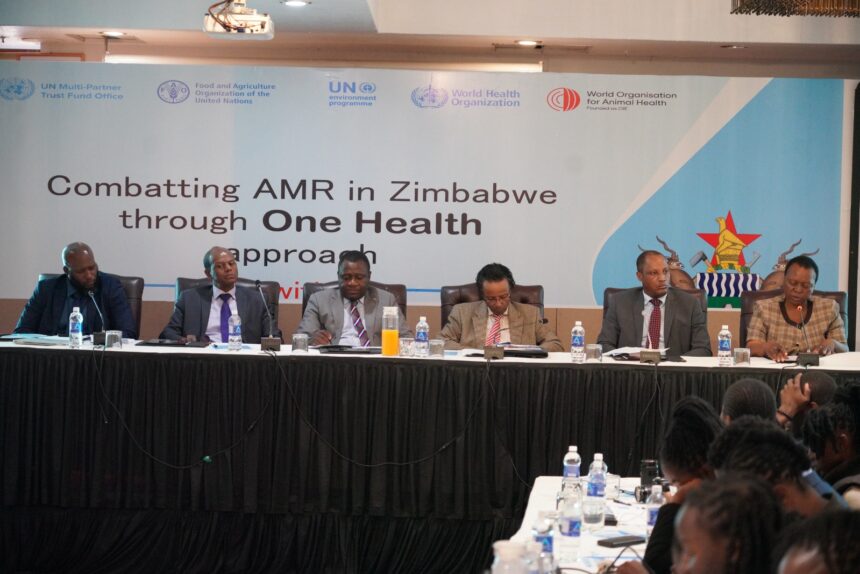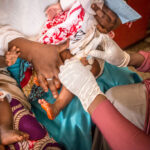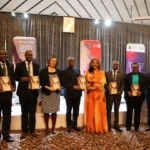ZIMBABWE’S ground-breaking successes including the successful local production of the Theileria parva vaccine and strengthening of its response to tick-borne diseases, have helped the country qualify for consideration for the second phase of the Antimicrobial Resistance (AMR) Multi-Partner Trust Fund (MPTF).
This means that Zimbabwe is one of three countries in the World Health Organization Africa Region (WHO Afro) eligible to apply for the second phase after the successful completion of phase one of the fund.
The country’s efforts did not go unnoticed and therefore, it is therefore not a surprise that Zimbabwe is one of the three countries selected in the WHO African Region to submit a proposal for Phase 2, according to Dr Walter Fuller who spoke on behalf of the AMR MPTF Secretariat.
“Zimbabwe, their respective line ministries and the AMR Secretariat have shown that the trust placed on them by the MPTF Committee was justified through the ground-breaking successes registered to date,” Dr. Fuller said.
The Theileria parva vaccine, commonly known as the BOLVAC vaccine has been developed to combat January Disease which is one of the tick-borne diseases affecting cattle in Zimbabwe with others being red water, cold sickness and hot water.
Tick-borne diseases in the country account for 66% of cattle deaths and Zimbabwe’s policy to control this scourge is found in the Zimbabwe Livestock Recovery and Growth Plan (LRGP) (2021-2026) and the Zimbabwe Integrated Tick and Tick-borne Disease Control Strategy (2022-2030).
LRGP aims to address challenges in livestock production and productivity to foster a resilient and efficient sector while the Zimbabwe Integrated Tick and Tick-borne Disease Control Strategy aims to sustainably control tick-borne diseases in ruminant livestock.
 The MPTF aims to catalyze and accelerate One Health approaches to AMR in low- and middle-income countries, with a key focus on supporting the implementation of National Action Plans (NAPs).
The MPTF aims to catalyze and accelerate One Health approaches to AMR in low- and middle-income countries, with a key focus on supporting the implementation of National Action Plans (NAPs).
Chief Director for Veterinary Services in the Ministry of Lands, Agriculture, Fisheries, Water and Rural Development, Dr Pious Makaya, in a speech read on his behalf at the official close-out of phase one event said the AMR MPTF was crafted to foster a multi-sectoral One Health approach—one that bridges human, animal, and environmental health to effectively combat antimicrobial resistance.
“Over the past months, we have witnessed this vision come alive through coordinated action, knowledge sharing, and capacity building. I’m also humbled that Zimbabwe has been considered for them to submit a project proposal for the phase two of the MPTF project,” Dr Makaya said.
He noted key milestones achieved under the first phase which include:
- Critical investigations into hospital-acquired infections, which laid the foundation for improved infection prevention and control protocols in our healthcare facilities.
- Surveillance of substandard and falsified medicines, supported by handheld near-infrared spectroscopy devices procured for the Medicines Control Authority of Zimbabwe.
- Implementation of Farmer Field Schools (FFS), which empowered broiler farmers through hands-on training in sustainable and biosecure poultry production.
Food and Agriculture Organization of the United Nations (FAO) Sub-Regional Office for Southern Africa, Livestock Development Officer, Berhanu Bedane, said FAO’s support which focused on practical, evidence-based interventions in the animal health sector contributed to the reduction in antimicrobial use by enhancing biosecurity and disease prevention at community level.
“This initiative has demonstrated the value and impact of the One Health approach where sectors across human, animal and environmental health work together to address the shared threat of antimicrobial resistance,” said Bedane.
In support of national efforts to transition from treatment to prevention, FAO collaborated with the Department of Veterinary Services and the World Organisation for Animal Health to strengthen local vaccine production.
“In this regard, FAO coordinated and supported key milestones including the stability trials for the Theileriosis vaccine, a dossier development workshop, training of field personnel on vaccine handling and application in Manicaland, and the procurement of critical reagents and consumables to boost the capacity of the Central Veterinary Laboratory,” he added.
AMR is a very complex problem, according to Dr Dechassa Tegegne, AMR Programme Officer at the World Organization for Animal Health (WOAH) in Southern Africa and therefore requires a multi-stakeholder approach.
“This complex problem should not be addressed by single institutions. It needs multi-stakeholder engagement,” Dr Tegegne said.
WHO Zimbabwe Representative, Dr Desta Tiruneh said the meeting offered an opportunity to reflect on the progress made under Zimbabwe’s AMR National Action Plan implementation, made possible through the catalytic fund received, which is a $1 million grant from the MPTF.
FAO’S Bedane said that as phase one of support comes to a conclusion, the partners were confident that the foundations laid will contribute to sustained national capacity to respond to AMR. The activities implemented have been aligned with government priorities, embedded within national systems, and designed with continuity in mind.
“Looking forward, FAO and its partners in the Quadripartite remain fully committed to maintaining momentum. To this end, we will work with our counterparts to consolidate the achievements realized and identify clear pathways for continued collaboration in the implementation of Zimbabwe’s AMR National Action Plan 2.0,” said Bedane.














